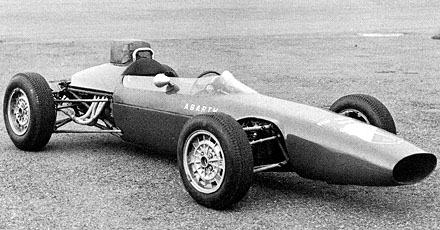Abarth

Carlo Abarth was one of the Porsche project managers for the doomed Cistalia GP car and in this capacity he came to Turin in 1947. Following the failure of the Cistalia programme Abarth decided to stay in Turin where he started his own company producing high performance add-ons for Fiat, Lancia and Alfa Romeo. To advertise the effectiveness of his products Abarth began producing a number of racing and record cars using Fiat and Alfa engines fitted to attractive cars designed by many of the noted Turin stylists. Abarth began to specialise in tuning Fiats especially following the release of the Fiat 600. Through the 1960s and ’70s Abarth created and raced number of very potent saloon and 2-litre sports cars often with great success. However Abarth only ever dabbled in the world of single seaters, in 1964 they built a spaceframe F2 car with their own 995cc engine and six-speed gearbox but results were disappointing with the Abarth engine no match for the opposition Cosworth unit. In 1968 a F1 car was announced using an Abarth V8, it was to have been tested/raced by Jonathan Williams but in his opinion the car design was very outdated and rumours that the V8 was dreadfully underpowered meant the car never turned a wheel.
1964
The pictures of the 1964 Abarth F3 indicate that the chassis was the same as that used for the F2 design, in addition track and wheelbase dimensions were virtually identical. It was a conventional spaceframe design with wishbone-based outboard suspension front and rear. Front track was 1320mm, rear 1330mm, wheelbase 2300mm and the chassis weighed 400kg. The engine was a 982cc Fiat-based unit with a four-speed gearbox, a Weber 40DCD carburetor was used and power was quoted as 88bhp at 7900rpm.
For whatever reason, perhaps the F3 engine wasn’t up to the job, the Abarth never raced.
